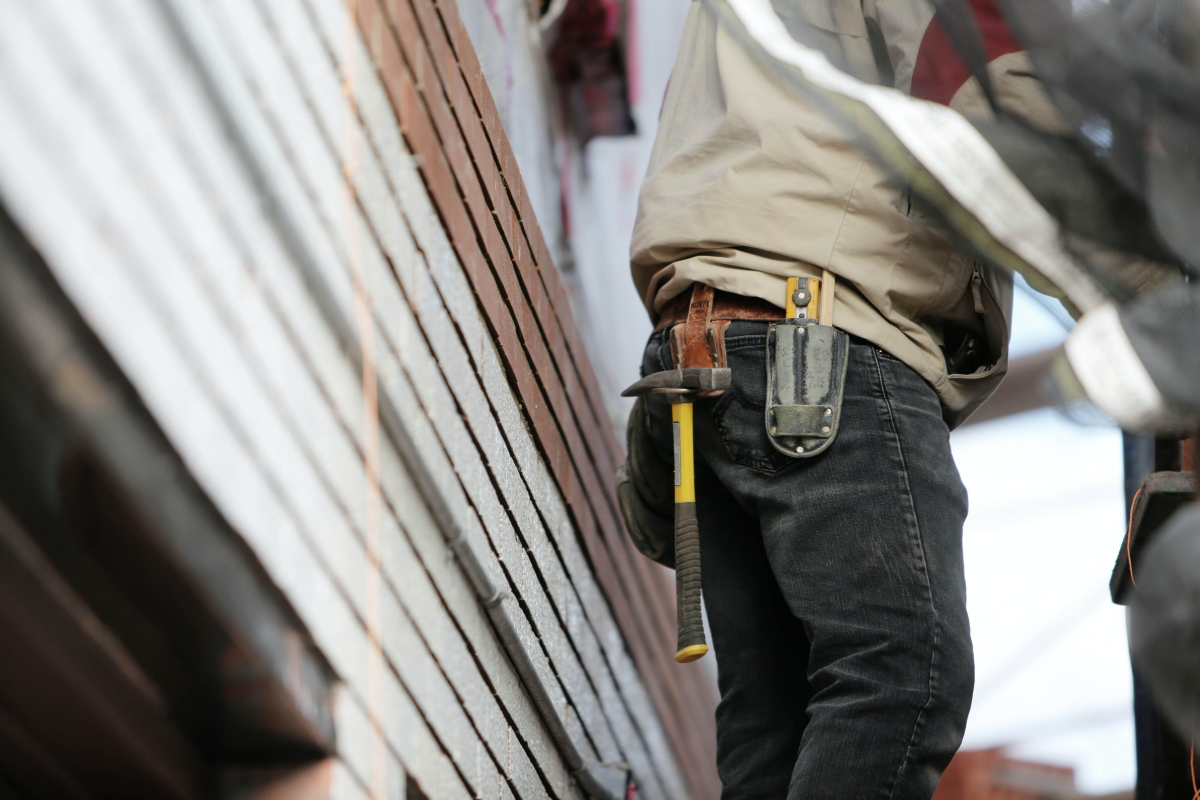Why Does My AC Smell? A Pro’s Guide to Finding and Fixing the Stink
There’s nothing better than the rush of cool air when the AC kicks on during a sweltering day. But what happens when that cool air comes with a nasty smell? It’s more than just annoying; it’s your air conditioner sending you a smoke signal (sometimes literally) that something is wrong.
In this article
I’ve spent years working on HVAC systems, and trust me, I’ve smelled it all. From the musty funk of a neglected coil to the alarming scent of burning wires. A lot of advice out there just tells you to spray some air freshener or change the filter. While a fresh filter is always a good idea, that often just puts a band-aid on a bigger problem. To really get rid of the odor for good, you need to think like a tech, diagnose the specific smell, and fix the root cause.
So, let’s walk through it. We’ll figure out what your AC is trying to tell you and how to get your home smelling fresh again.

First, Why Do AC Units Even Get Smelly?
Here’s the quick and dirty science. Your air conditioner doesn’t actually create cold air; it moves heat from inside your house to the outside. A key player in this magic act is the evaporator coil inside your indoor unit.
Think about a glass of ice water on a humid day. See how it gets covered in condensation? Your evaporator coil does the exact same thing. It gets incredibly cold, and as warm, humid air from your home blows across it, moisture condenses onto its metal fins. This is great because it dehumidifies your house.
But here’s the catch. That moisture drips into a drain pan and flows out a pipe. The inside of this unit is dark, damp, and becomes a magnet for all the gunk in your air—dust, pet dander, pollen, you name it. This creates the perfect, disgusting breeding ground for mold, mildew, and bacteria. You’re not smelling the machine; you’re smelling what’s living inside it.

What’s That Smell? Your AC Odor Decoder
When I show up for a service call, the first thing I do is ask the homeowner to describe the scent. Different smells point to very different problems. Let’s break down the most common ones.
Smells Like a Musty Basement or Dirty Socks
This is, by far, the most common complaint. If your home smells like a damp locker room a minute after the AC turns on, you almost certainly have mold or bacteria camping out on your evaporator coil. This is often called “Dirty Sock Syndrome,” and it’s caused by bacteria that really come alive when the system cycles on and off, creating that perfect wet-then-damp environment they love.
- The Likely Culprit: Microbial growth on the evaporator coil.
- Your First Move: A thorough coil cleaning is in order.
Smells Like Rotten Eggs or Sulfur
Heads up! This one is a serious red flag. In most cases, this smell points to a natural gas leak somewhere in your home. Utility companies add a chemical called mercaptan to natural gas to give it that foul smell so you can detect it. If the leak is near your air return vent, the AC will suck it in and blow it all over the house.

- The Likely Culprit: A potential natural gas leak.
- Your First Move: DO NOT turn on lights or use any electronics. Leave your home immediately and call your gas company from a safe distance (like a neighbor’s house or down the street).
By the way, there’s a less common cause: a small animal that got trapped in your ductwork and, well, didn’t make it out. The smell is usually much more potent and might seem stronger near one particular vent.
Smells Like It’s Burning or Has an Electrical Odor
If you get a whiff of burning plastic, hot metal, or something like gunpowder, this is an emergency. It means an electrical component is failing—it could be an overheating blower motor, fried wiring, or a bad circuit board. Running the system is a major fire hazard.
- The Likely Culprit: An electrical failure in the system.
- Your First Move: Shut off your AC immediately at both the thermostat and your home’s circuit breaker. This is not a DIY fix. Call a qualified HVAC professional right away.

Smells Like Chemicals or Paint Thinner
This could be something simple. If you just painted a room, refinished furniture, or used strong cleaning products, your AC is just circulating the fumes. These smells, known as VOCs (Volatile Organic Compounds), should fade over time.
However, if the smell is persistent and a bit sweet or chloroform-like, it might signal a refrigerant leak. Modern refrigerants are mostly odorless, but the oils they’re mixed with can leak out and burn off on hot parts, creating a faint chemical scent. You’ll probably also notice your AC isn’t cooling well. Handling refrigerant requires a special certification, so this is another job for the pros.
- The Likely Culprit: Fumes from household products or a refrigerant leak.
- Your First Move: Air out your house. If the smell continues or your AC performance drops, call a tech.
Your First Line of Defense: Simple DIY Fixes
Before you spend money on a service call, a few simple tasks can solve a surprising number of these issues. Honestly, doing these things regularly is the best thing you can do for your HVAC system.

Get Serious About Your Air Filter
The air filter is your system’s bodyguard. It stops the dust and debris that feed all that nasty growth. But you have to use it right.
- Check it monthly. Seriously. The package might say it “lasts 90 days,” but that’s in a perfect lab. If you have pets or live in a dusty area, you might need to change it every 30-45 days. A good rule of thumb: hold it up to a light. If you can’t see the light clearly, it’s done.
- Get the right type. Look for the MERV rating. A higher number means better filtration, but don’t go overboard! A super-high MERV filter (like MERV 13+) can be too restrictive, choking your system for air and straining the motor. For most homes, a filter in the MERV 8 to MERV 11 range is the perfect balance. You can find a pack of these for anywhere from $15 to $40.
- Install it correctly. There’s an arrow on the filter’s frame. This arrow MUST point toward the indoor unit (the furnace or air handler). Putting it in backward can cause it to collapse and get sucked into the fan, which is a much bigger problem.

Clear the Area Around Your Outdoor Unit
The big metal box outside needs to breathe. It’s pushing all the heat from your house out into the atmosphere. Make sure you have at least two feet of clearance all the way around it. Trim back bushes and pull any weeds. And for goodness sake, don’t stack things against it!
I’ll never forget one call… the homeowner swore his AC was dying every summer. Turns out his dryer vent was located just a few feet away, blasting a sweater’s worth of lint onto the unit’s fins every week. We gave it a good cleaning, and it ran like new.
Going Deeper: When You Need to Clean the Insides
If a new filter didn’t do the trick, the problem is likely deeper inside. This is where most musty smells live. If you’re handy, you can tackle this yourself, but it requires patience and a healthy respect for safety.

First things first: Kill the power. Go to your circuit breaker and flip the breaker for your “Air Handler” or “Furnace.” There’s usually a service switch on or next to the unit itself, too. Turn that off as well. A pro always uses a multimeter to be sure the power is off. It’s a step you should never skip.
1. Clean the Evaporator Coil
This is ground zero for musty smells. You’ll need to remove an access panel to get to it. Once you have a clear view, here’s the game plan. Plan for about an hour or two for your first time doing this.
You’ll want to buy a proper, no-rinse foaming coil cleaner. Don’t use bleach or harsh household cleaners; they can corrode the delicate aluminum fins. You can find a good can of cleaner, like Nu-Calgon’s Evap-Fresh, at Home Depot, an HVAC supply store, or online for about $15-$25. While you’re at it, an $8 fin comb is a great tool for gently straightening any bent fins you see, which helps with airflow.

Gently spray the cleaner onto the coil, starting at the top and working your way down. The foam will expand, pushing dirt and gunk out from between the fins. The best part about the no-rinse kind is that when you turn your AC back on, the normal condensation will rinse the cleaner and all the filth down into the drain pan and out of your house.
2. Clear the Condensate Drain Line
A clogged drain line causes water to back up, creating a stagnant swamp in your drain pan—a perfect recipe for odors and potential water damage.
Look for a PVC pipe coming from the indoor unit. There should be a T-shaped fitting with a cap on it; this is your access point. Every couple of months, pour about a cup of distilled white vinegar down this opening. It’s great for preventing algae and slime buildup.
If you have an existing clog, a wet/dry shop vacuum is your best friend. Take the vacuum outside to where the drain line terminates. Attach the hose to the pipe (use your hand or some duct tape to get a good seal) and let it run for a few minutes. You might be horrified by what you pull out of there, but it’s incredibly effective.

Pro-Level Solutions for Tough Cases
Sometimes, especially in certain climates, you need to bring in bigger guns.
In super-humid regions, the fight against moisture is relentless. If you have persistent musty odors, a UV-C light installation might be the ultimate solution. A technician installs a special lamp inside your air handler that shines ultraviolet light on the coil 24/7, killing any mold or bacteria that tries to grow. It’s a set-it-and-forget-it solution that I’ve seen work wonders. Expect this to cost anywhere from $400 to $800 including professional installation.
Know When to Call for Backup
Look, I’m all for empowering homeowners, but you need to know your limits. Call a certified technician if you encounter:
- Any burning or electrical smells. Non-negotiable.
- A suspected refrigerant leak. You need a pro with an EPA certification.
- Significant visible mold. Don’t try to scrub a huge patch of mold yourself. You can accidentally release a massive amount of spores into your home’s air.
- An odor that won’t go away. If you’ve cleaned the coil and drain and the smell is still there, the problem could be inside your ductwork. Be wary of those “$99 whole-house duct cleaning” specials. A real, thorough duct cleaning is an intensive job that typically costs between $450 and $1,000.

What a REAL Tune-Up Should Include
Finally, the best defense is a good offense. Getting an annual professional tune-up is a smart investment. A good tech won’t just glance at your system. A proper tune-up, which usually costs between $75 and $200, should include cleaning both indoor and outdoor coils, checking refrigerant levels, testing electrical components like capacitors and motors, and clearing the drain line. This not only prevents odors but also makes your system run more efficiently and last longer.
So next time your AC greets you with a funky smell, don’t just reach for the air freshener. Listen to what it’s telling you. A little detective work and some basic maintenance can get your system back to being a source of pure comfort. Your nose will thank you for it.










